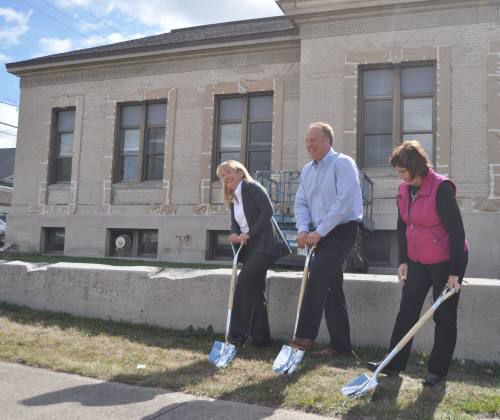Welcome to the historic Cobb’s & Mitchell Building in Cadillac, Michigan, a testament to the bustling lumber industry that defined the area’s early development. This building stands as an enduring symbol of the entrepreneurial spirit that characterized the late 19th and early 20th centuries in Northern Michigan.
George A. Mitchell, a visionary railroad entrepreneur, and his nephew, William W. Mitchell, played pivotal roles in the establishment of Cadillac as a thriving community. They were instrumental in drawing influential businessmen and lumbermen to the area, capitalizing on the rich timber resources around Clam Lake, now known as Lake Cadillac.
The Cobb’s & Mitchell Building itself was commissioned in 1905 by the prominent lumber firm Cobbs & Mitchell, founded by Jonathon W. Cobbs and William W. Mitchell. The building, completed in 1907, was designed by the renowned architect George D. Mason. Its classical revival style, crafted from brick and limestone, served as a magnificent showcase for the lumber company’s products.
Throughout its history, the Cobb’s & Mitchell Building was more than just an office space. It was a hub of economic activity, housing not only Cobbs & Mitchell but also the Mitchell Brothers Company and other local businesses. The building’s significance was further cemented when the Michigan State Highway Department took ownership in 1938, using it as a planning headquarters for road expansions in the region.
Over the years, the building has seen extensive renovations, ensuring its preservation as a historical landmark. In 2010, the city of Cadillac acquired the property, later selling it to a private developer committed to maintaining its historical integrity. The building reopened to the public in 2018, showcasing its beautifully restored vintage woodwork and updated facilities.
The Cobb’s & Mitchell Building is not just a remnant of the past; it is a living monument to the industrious spirit that shaped Cadillac and the broader region. As you stand before this grand structure, imagine the clamor of sawmills, the bustle of railroad construction, and the dreams of those who saw potential in the thick Michigan forests.





